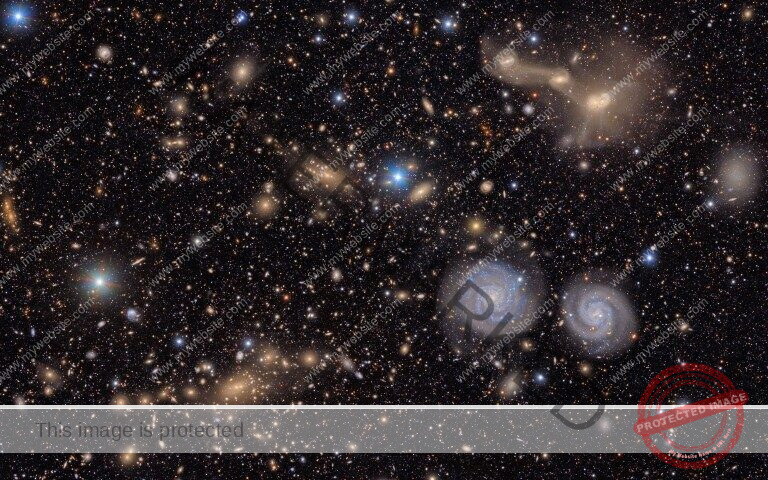WASHINGTON: The Vera Rubin Observatory in Chile released its first deep space photographs on Monday, revealing stunning, swirling, multicolored galaxies and star-forming areas.
The massive US-funded telescope, which has been in the works for more than 20 years, is situated atop Cerro Pachon in central Chile, where dry air and dark sky make it the perfect place to observe the stars.
Several thousand light-years from Earth, the Trifid and Lagoon Nebulas glow brightly pink against orange-red backgrounds in one of the first photos, which is a composite of 678 exposures shot over seven hours.
With previously indistinct or unnoticeable characteristics now plainly apparent, the image provides previously unheard-of detail on these star nurseries within our Milky Way. An overview of the Virgo Cluster of galaxies can be seen in another image.
A film called the “cosmic treasure chest”, which starts with a close-up of two galaxies before zooming out to reveal some 10 million more, was also shared by the researchers.
Michael Kratsios, director of the White House Office of Science and Technology Policy, stated, “The Rubin Observatory is an investment in our future, which will lay down a cornerstone of knowledge today on which our children will proudly build tomorrow”. It has the largest digital camera ever constructed, an innovation 8.4-meter telescope, and a potent data processing engine.
The camera, which is about the size of a car and weights 2.8 tons, has 3,200 megapixels, which is more than three times the resolution of the next most powerful device, the Hyper Suprime-Cam from Japan, which has 870 megapixels.
SOURCE: DAWN NEWS





